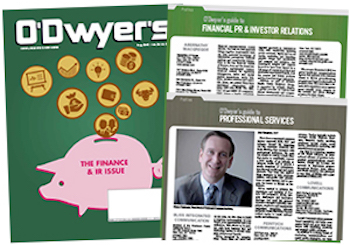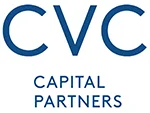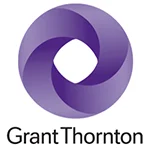 Dan Mahoney |
Financial content needs choreography
What does “choreography” mean to the financial communicator? Shifts in the communications industry are challenging financial communicators to evolve, and no other industry stands to benefit from these strategic shifts as much as financial services, which holds fast to the premise that “safe” communications is the best way to go. Indeed, traditional financial PR still has its place, but financial communicators should strive to make audiences smarter, challenge their assumptions, educate and enrich their lives and, at the end of the day, entertain them.
|
|
Creating choreographed content in financial services is not simply a call for financial communicators to use creative license — it also is an appeal for such professionals to use the tools in their arsenal to design a series of well-planned steps that delight the audience and evoke response.
This appeal comes at a time when the effectiveness of content marketing is openly being questioned. The Content Marketing Institute found in a recent study that 30 percent of companies consider their B2B content marketing programs effective, down significantly from 38 percent a year earlier. Fifty-five percent of companies reported that they lacked clarity on whether their B2B content marketing programs were successful, according to the Content Marketing Institute’s report, “2016 B2B Content Marketing Benchmarks, Budgets, and Trends — North America.”
After conducting content strategy audits for Fortune 200 companies, financial services associations, banks and asset management firms, we have identified significant shortcomings in how content is created, packaged and distributed. These are the most prominent shortcomings we have found:
Quantity is rewarded, while quality doesn’t matter. Many companies actually peg employees’ bonuses to the number of white papers and pieces of content they produce in a given year. Targeted readers — whether financial advisors, consumers or financial services influencers — are bombarded with content too numerous and too low in quality. Companies should ask themselves, “Will our audience care if our content disappeared today?”
Invisible content. Many companies are producing quality content that languishes on a web site. The old adage of “If a tree falls in a forest and no one is around to hear it, does it make a sound?” rings true in this case. Effective strategic communication can ensure that content is leveraged across an organization from sales to social media to direct marketing, while also tapping into invaluable influencer networks.
One-way conversation. The “safe zone” of financial communications can sometimes lead audiences to zone out. Many financial institutions make the mistake of communicating information that the organization is excited about but that offers little relevance and intrigue to the audience. Why should your audience care about your content? What will it take for the audience or influencer to participate in the conversation?
Incomplete understanding of the audience. Financial communicators who profile their audience based on assumptions or transaction history may be missing an opportunity to tailor their content to create experiences that resonate. Strategic communicators must invest in understanding targeted audiences and the influencers they respect. Knowing the audience’s aspirations and challenges and helping them along the way is what builds trust, transparency, engagement and — ultimately — a decision.
No flavor. Press releases have their place, but long ago lost their status as the top method of PR communication. Financial communicators have multiple options for amplifying their core messages by packaging information across various media such as video, webinars, infographics and engaging visuals.
The art, science of content choreography
When the term choreography is used, it is most often associated with performance and dance. We believe it also applies to financial communication professionals who aim to build anticipation for what is next versus the many transactional, one-and-done campaigns of today.
In financial communication, the fears and hopes of the audience, market factors and economic indicators all must be factored in to compose a content experience that inspires the reader to act.
Equal part art and science, content choreography challenges financial PR professionals to deliver experiences to audiences by embracing some of the aforementioned shifts in financial communication. The PR professional viewing content as a choreographed composition will need to embrace a new way of looking at content creation:
Functional content can be beautiful: Incorporate new styles of communication and use multiple media formats to tell a story that is both visually and verbally engaging.
Study the audience to master the story: Use data and analytics, map audience/user journeys and tailor the content based on findings. With big data on the rise, strategic communicators will soon be able to hyper-target users, with the goal of delivering quality content experiences to drive action.
Find targeted influencers to participate with the content: Neglecting influencers means you are not reaching the full audience. Take the time to build influencer relationships and identify synergies.
Transform content into conversation: Whether through a training manual or a bylined article, bring the voice of the customer or the audience member into your content.
Build anticipation: Leave readers wanting more and offer them a way to continue the experience through a subscription opt-in or access to the next chapter of the story.
Measuring content’s value
Value is ultimately in the eye of the beholder, meaning that it can be difficult to discern and measure. If strategic communications is grounded in the overall business objectives of the client, however, there will be both short-term and long-term measurement and impact goals. Every company should have a toolkit of metrics based on its respective go-to-market strategy: metrics that help the content team craft its approach and constantly recalibrate strategy and tactics to generate the biggest bang for the buck.
Metrics are a critical part of any successful strategic communications initiative, as they translate consumer actions into a value score. If we’re doing our jobs correctly, customers and decision-makers should be opting into the brand promise and eagerly awaiting what’s next, which is indicative of a high value score. An engaged and activated subscriber can be a priceless asset to the communications team in the long term.
From content creation to choreography
In some ways, financial PR communicators are well-positioned to thrive in an evolving communications environment. With a history of capturing the attention of the most skeptical audience, the financial services industry has an opportunity to break through the content noise and deliver meaningful experiences to customers. However, when appealing to influencers and non-traditional media entities, communicators must move beyond traditional styles of communication.
Financial communications pros have an unprecedented opportunity to create experiences for their audiences through choreographed content: step-by-step, planned and researched experiences that leave them wanting more.
* * *
Dan Mahoney is senior vice president of the Financial Services Practice at Communications Strategy Group.



 Teneo is handling the initial public offering of CVC Capital Partners, one of Europe’s largest private equity firms with nearly $200B in assets under management.
Teneo is handling the initial public offering of CVC Capital Partners, one of Europe’s largest private equity firms with nearly $200B in assets under management. Brunswick Group represents Endeavor Group Holdings as it agrees to go private via its acquisition by Silver Lake technology investment firm, which is handled by Edelman Smithfield.
Brunswick Group represents Endeavor Group Holdings as it agrees to go private via its acquisition by Silver Lake technology investment firm, which is handled by Edelman Smithfield. Tod Donhauser, a nine-year veteran of Edelman, has joined H/Advisors Abernathy as managing director and head of its San Francisco office.
Tod Donhauser, a nine-year veteran of Edelman, has joined H/Advisors Abernathy as managing director and head of its San Francisco office. Intelligent Group Ltd, a Hong Kong-based financial PR firm, has priced its initial public offering of 1.9M shares at $4, which is the low end of the $4 to $5 range.
Intelligent Group Ltd, a Hong Kong-based financial PR firm, has priced its initial public offering of 1.9M shares at $4, which is the low end of the $4 to $5 range. Kekst CNC represents Grant Thornton as it sells a majority stake in its US arm to New Mountain Capital, which relies on Goldin Solutions, in what is billed as the largest PE investment in the accounting and advisory sector.
Kekst CNC represents Grant Thornton as it sells a majority stake in its US arm to New Mountain Capital, which relies on Goldin Solutions, in what is billed as the largest PE investment in the accounting and advisory sector.


 Have a comment? Send it to
Have a comment? Send it to 
No comments have been submitted for this story yet.